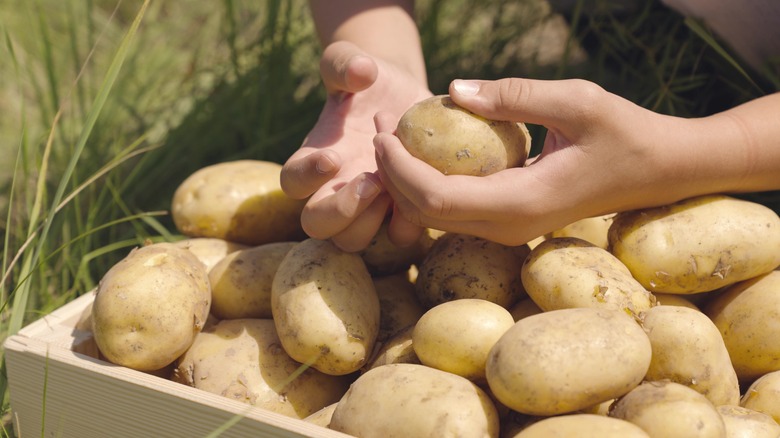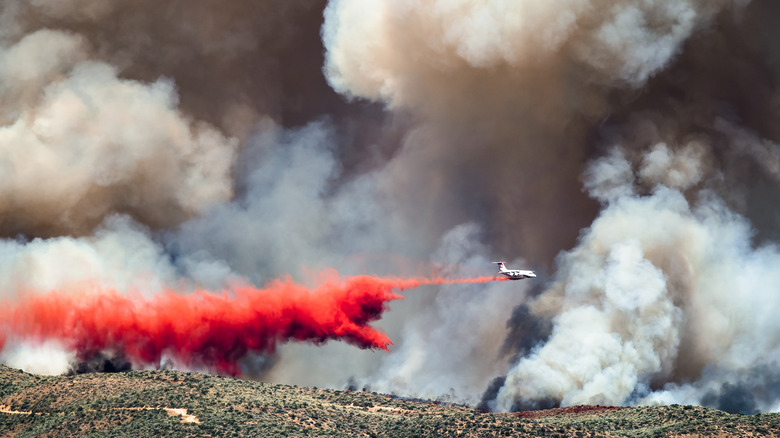The Ruinous Effects Of Wildfire Smoke On Potatoes
As the most prolific potato-growing state in America, Idaho is unsurprisingly a place where potato-based research takes place. Whether it involves pests, soil quality, sustainability, or many more considerations, it pays to stay on top of trends and potential issues. But one surprising area of concern gets the spotlight in a two-year collaborative study launched by Boise State University and the University of Idaho in 2022: wildfire effects on potatoes. Underground crops such as potatoes aren't the most conspicuous recipients of wildfire smoke exposure. But a recent observation points to a bigger story than meets the eye, as explained by Boise State Public Radio.
The Idaho State Department of Agriculture reveals that one-third of all American potatoes come from 300,000-plus acres in Idaho, producing more than 100 million "hundredweight" of potatoes annually. With a single hundredweight equaling 100 U.S. pounds, per Investopedia, that's a whole lot of tubers. Damage to potato crops can have a significant impact on the human food chain, as evidenced by the Irish Potato Famine of the mid-1800s. Though modern-day America is not as potato-dependent as 19th-century Ireland, smoke-damaged potatoes don't appear on many wish lists for menus.
A smoky taste is not the issue with Idaho potatoes exposed to wildfires. The actual effects are much more ruinous.
Size, disease, and quality
California gets the most attention for wildfires. A staggering 9,280 fires ravaged more than 2.2 million acres in 2021 alone, according to Policygenius. Idaho, considerably smaller than California, came in sixth among the 50 states, ending 2021 with a tally of 1,3331 fires that torched 439,600 acres. Though arguably less conspicuous than smoke-damaged grape vines in California, the potato crops of Idaho experienced a subtle yet significant impact from uncontrolled raging fires.
Wildfires create toxicity in the air, which in turn affects edible crops, including potatoes, explains Growing Produce. Ozone and particulate matter form when wildfires emit carbon dioxide, ozone precursors, and black or brown carbon, which mix with air to create potentially "toxic pollutants." The emissions can damage plants at the cellular level, eventually impairing function and growth with extended exposure. Smoke also blocks light, affecting photosynthesis and limiting the yields of potato crops. Since it can prevent warmth from reaching pertinent soil layers, it leaves the tubers vulnerable to potato diseases such as gray mold and late blight.
Boise State Public Radio reveals how Idaho potato farmers and processors began noticing stunted growth and inferior quality during particularly smoky seasons, resulting in "higher simple sugar content," reduced color grade, and a lot more waste. The new two-year joint-university study aims to identify which potato chemicals suffer the most from wildfire smoke, thereby informing future potato breeding for resilience and smoke resistance.

